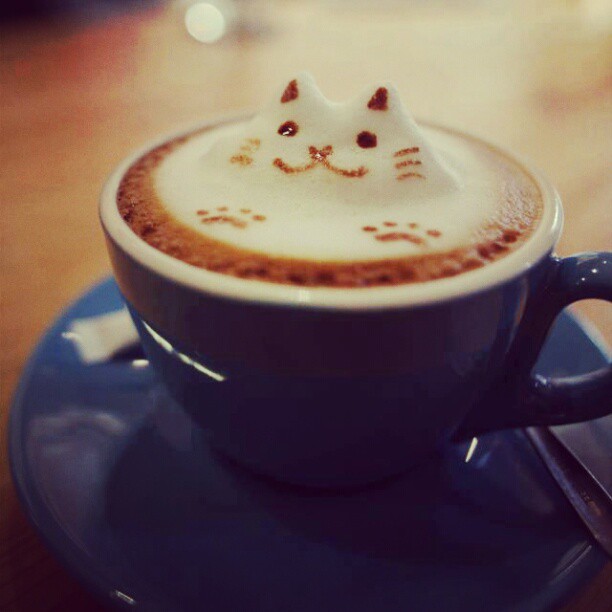Why It Matters: Branding
Why analyze elements of a brand and explain how the brand-building process contributes to the success of products or services?

Pop Quiz!
Instructions: Grab a piece of paper and jot down answers to the following questions:
- What is your favorite brand of clothing?
- Why is it your favorite?
- List a word or phrase that describes how this brand makes you feel:
- What is your favorite brand of car?
- Why is it your favorite?
- List a word or phrase that describes how this brand makes you feel:
- What is your favorite place to stop for coffee, donuts, a bagel, or some other snack?
- Why is it your favorite?
- List a word or phrase that describes how this place (which is also a brand) makes you feel:
Set the paper aside for a moment and keep reading. We’ll come back to it.
The Power of Brand
Brands are images that exist in your mind–and in the minds of other consumers–about the things around you: products, services, places, companies, people, entertainment, and so on. In a modern world that offers many choices, brands help simplify the decisions you make about what to buy, where to go, and how to spend your time.
Brands are powerful. When you explain why a brand is your favorite, you probably identify some of the traits or features of its products or services that explain rationally what makes it better than others. But rational explanations are just part of the story. Strong brands are powerful because they also tap into emotions. They make you feel a certain way and that feeling is hard for any other brand to replicate—let alone replace.
Brands can cause people to spend more money on a product than they would otherwise. Brands can create a sense of loyalty and even lock-in—that haloed point where a tribe of dedicated fans always chooses one company’s product or services over another.
So how do they do it? What’s happening in marketing departments to create these powerful, emotional assets called brands?
What Creates a Brand Experience?
Go back to your pop quiz responses. Pick one of your favorite brands and list 2–3 things the company behind the brand provides to help make that favorite brand so memorable or special for you. It could be any of the following things–or something else entirely:
- Brand name
- Product design
- The shopping experience
- The post-purchase experience
- People or communities associated with the brand
- Product packaging
- Advertising
- Social media activity
- Customer service
- Comfort, convenience, or ease-of-use
- Attitude or personality of the brand
- Special information, deals, or promotions targeted to you
- Membership or loyalty programs
- Pricing or value for the money
- Events or activities tied to the brand
- Something else?
Marketers use these tools and many others to create the total experience with a product, service, or company that turns it into an actual “brand.” In this module, you’ll learn how a brand starts and discover what it takes to coordinate all the different parts of the unique brand.
The Paradox of Brand
Although organizations take all kinds of measures to create and build brands, in fact, the brand isn’t just what the company says it is. In the end, the brand is what customers believe it is, as the following quote explains:
So what exactly is a brand?
A brand is a person’s gut feeling about a product, service, or organization.
It’s a gut feeling because people are emotional, intuitive beings. It’s a person’s gut feeling because brands are defined by individuals, not companies, markets, or the public.
It’s not what YOU say it is.
It’s what THEY say it is.—Marty Neumeier, author and branding consultant, Neutron LLC
Companies can do a lot to create and build brands, but the net impact and value is what happens inside the mind of the consumer. The supreme challenge of brand is to make your vision of your brand the same thing other people experience and believe about your brand.
Don Draper of Mad Men captures (in the antiquated context of the 1950s) the difference of a good brand experience and how it can create a feeling.
What Is a Brand?
As we start our exploration of brand and its role in marketing, take a few minutes to watch the following video about Coca-Cola, which is perhaps one of the most iconic brands of all time.
Here’s Don Drapers’ ‘idea’ for the refreshed Coke Brand in 1971. Does it resonate today?
Brands are interesting, powerful concoctions of the marketplace that create tremendous value for organizations and for individuals. Because brands serve several functions, we can define the term “brand” in the following ways:
- A brand is an identifier: a name, sign, symbol, design, term, or some combination of these things that identifies an offering and helps simplify choice for the consumer.
- A brand is a promise: the promise of what a company or offering will provide to the people who interact with it.
- A brand is an asset: a reputation in the marketplace that can drive price premiums and customer preference for goods from a particular provider.
- A brand is a set of perceptions: the sum total of everything individuals believe, think, see, know, feel, hear, and experience about a product, service, or organization.
- A brand is “mind share”: the unique position a company or offering holds in the customer’s mind, based on their past experiences and what they expect in the future.
A brand consists of all the features that distinguish the goods and services of one seller from another: name, term, design, style, symbols, customer touchpoints, etc. Together, all elements of the brand work as a psychological trigger or stimulus that causes an association to all other thoughts one has had about this brand. Brands are a combination of tangible and intangible elements, such as the following:
- Visual design elements (i.e., logo, color, typography, images, tagline, packaging, etc.)
- Distinctive product features (i.e. quality, design sensibility, personality, etc.)
- Intangible aspects of customers’ experience with a product or company (i.e. reputation, customer experience, etc.)
Branding–the act of creating or building a brand–may take place at multiple levels: company brands, individual product brands, or branded product lines. Any entity that works to build consumer loyalty can also be considered a brand, such as celebrities (Lady Gaga), events (CIBC Run for the Cure), and places (Las Vegas).
Origins of Branding
The word “brand” is derived from the Old Norse brand meaning “to burn,” which refers to the practice of producers burning their mark (or brand) onto their products. Italians are considered among the first to use brands in the form of watermarks on paper in the 1200s. However, in mass-marketing, this concept originated in the nineteenth century with the introduction of packaged goods.

During the Industrial Revolution, the production of many household items, such as soap, was moved from local communities to centralized factories to be mass-produced and sold to wider markets. When shipping their items, factories branded their logo or insignia on the barrels they used. Eventually these “brands” became trademarks—recognized symbols of a company or product that have been established by use. These new brand marks enabled packaged goods manufacturers to communicate that their products were distinctive and should be trusted as much as (or more than) local competitors. Campbell Soup, Coca-Cola, and Juicy Fruit gum were among the first products to be “branded.”
Brands Create Market Perceptions
A successful brand is much more than just a name or logo. As suggested in one of the definitions above, brand is the sum of perceptions about a company or product in the minds of consumers. Effective brand building can create and sustain a strong, positive, and lasting impression that is difficult to displace. Brands provide external cues to taste, design, performance, quality, value, or other desired attributes if they are developed and managed properly. Brands convey positive or negative messages about a company, product, or service. Brand perceptions are a direct result of past advertising, promotion, product reputation, and customer experience.

A brand can convey multiple levels of meaning, including the following:
- Attributes: specific product features. The Mercedes-Benz brand, for example, suggests expensive, well-built, well-engineered, durable vehicles.
- Benefits: attributes translate into functional and emotional benefits. Mercedes automobiles suggest prestige, luxury, wealth, reliability, self-esteem.
- Values: company values and operational principles. The Mercedes brand evokes company values around excellence, high performance, power.
- Culture: cultural elements of the company and brand. Mercedes represents German precision, discipline, efficiency, quality.
- Personality: strong brands often project a distinctive personality. The Mercedes brand personality combines luxury and efficiency, precision and prestige.
- User: brands may suggest the types of consumers who buy and use the product. Mercedes drivers might be perceived and classified differently than, for example, the drivers of Cadillacs, Corvettes, or BMWs.
Brands Create an Experience
Effective branding encompasses everything that shapes the perception of a company or product in the minds of customers. Names, logos, brand marks, trade characters, and trademarks are commonly associated with a brand, but these are just part of the picture. Branding also addresses virtually every aspect of a customer’s experience with a company or product: visual design, quality, distinctiveness, purchasing experience, customer service, and so forth. Branding requires a deep knowledge of customers and how they experience the company or product. Brand-building requires long-term investment in communicating about and delivering the unique value embodied in a company’s “brand,” but this effort can bring long-term rewards.
In consumer and business-to-business markets, branding can influence whether consumers will buy the product and how much they are willing to pay. Branding can also help in new product introduction by creating meaning, market perceptions, and differentiation where nothing existed previously. When companies introduce a new product using an existing brand name (a brand extension or a branded product line), they can build on consumers’ positive perceptions of the established brand to create greater receptivity for the new offering.
Brands Create Value
Brands create value for consumers and organizations in a variety of ways.
Benefits of Branding for the Consumer

Brands help simplify consumer choices. Brands help create trust so that a person knows what to expect from a branded company, product, or service. Effective branding enables the consumer to easily identify a desirable company or product because the features and benefits have been communicated effectively. Positive, well-established brand associations increase the likelihood that consumers will select, purchase, and consume the product. Tim Hortons, for example, has an established logo and imagery familiar to many Canadian consumers. The vivid colors and the always fresh slogan are easily recognized and distinguished from competitors, and many associate this brand with tasty donuts, good coffee, and great prices. It combines small-town living with Hockey and a compelling brand story. The trusted Canadian brand has its own nickname of “Timmies.” In recent years, ownership changes have caused a slip in their brand ranking. In May 2018, the Reputation Institute reported that Tim Hortons had fallen from 13th to 67th in its study of Canada’s most reputable companies. Digging in deeper, an Ipsos study showed that 35% of consumers said their opinion of Tim’s has gone down over the past five years. [1]
Brands are living and dynamic. Companies cannot control their brands. Sometimes the customer can create the brand or its nickname.

Listen to the Under the Influence podcast of Brands and their nicknames. Start at 4:31 minutes.
Benefits of Branding for Product and Service Providers

For companies and other organizations that produce goods, branding helps create loyalty. It decreases the risk of losing market share to the competition by establishing a competitive advantage customers can count on. Strong brands often command premium pricing from consumers who are willing to pay more for a product they know, trust, and perceive as offering good value. Branding can be a great vehicle for effectively reaching target audiences and positioning a company relative to the competition. Working in conjunction with positioning, branding is the ultimate touchstone to guide choices around messaging, visual design, packaging, marketing, communications, and product strategy.
For example, Starbucks’ loyal fan base values and pays premium prices for its coffee. Starbucks’ choices about beverage products, neighborhood shops, the buying experience, and corporate social responsibility all help build the Starbucks brand and communicate its value to a global customer base.
Benefits of Branding for the Retailer
Retailers such as Target, Safeway, and Wal-Mart create brands of their own to create a loyal base of customers. Branding enables these retailers to differentiate themselves from one another and build customer loyalty around the unique experiences they provide. Retailer brand building may focus around the in-store or online shopping environment, product selection, prices, convenience, personal service, customer promotions, product display, etc.
Retailers also benefit from carrying the branded products customers want. Brand-marketing support from retailers or manufacturers can help attract more customers (ideally ones who normally don’t frequent an establishment).
Image Credits
Awe, J.C. (2013, February 7). Coffee art in 3D [Photograph]. CC BY 2.0 Flickr. https://www.flickr.com/photos/qqjawe/8452733327/
Couleur. (2016, February 24). Coca Cola crown corks [Photograph]. CCO Pixabay. https://pixabay.com/photos/coca-cola-crown-corks-red-1218688/
JerryUnderscore. (2017, January 11). Starbucks Coffee sign [Photograph]. CCO Pixabay. https://pixabay.com/photos/starbucks-coffee-sign-city-urban-1972319/
MikesPhotos. (2015, September 29). Mercedes Benz [Photograph]. CCO Pixabay. https://pixabay.com/photos/car-mercedes-transport-auto-motor-1506922/
-
Robertson, G. (2020, February 9). Tim Horton’s fixing everything except what is hurting the brand. Beloved Brands. Beloved Brands. https://beloved-brands.com/2020/02/09/tim-hortons/↵

